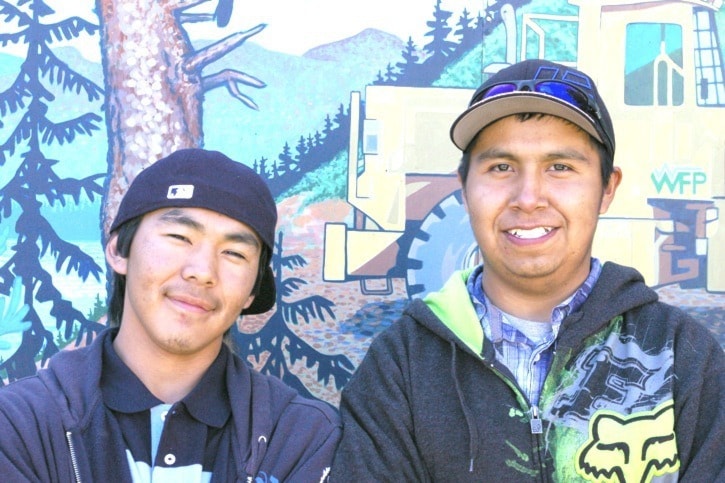With about 10,000 people living in Sooke, some might call it a small town. Don’t tell that to Waylon Simba from Kakisa, Northwest Territories that boasts a population of 52.
Simba, along with another high school student named Jaypiti Olayuk from Nunavut, is here until Aug. 17 on a five-week work exchange program through Northern Youth Abroad. It is an organization that focuses on providing cross-cultural work experience for youth from those two provinces aged 15 to 22.
“The biggest difference (here) is the city, (and) riding the bus,” says Simba with a slight accent, a tall soft-spoken 17-year-old dressed in a hoodie and ball cap much like any other local teen.
His slightly more outgoing friend, 18-year-old Olayuk, is wearing an almost matching outfit. It’s hard to believe that he comes from Artic Bay, Nunavut -- the third norther most community in Canada with about 700 residents. That is, until he starts to talk about his favourite foods back home.
“I like muktuk (whale meat), Arctic char (fish), caribou, seal, rabbit,” says Olayuk. “We make soup, barbeque it, or just eat it raw.”
The pair is certainly getting to sample a slightly different menu here in B.C. His host family, Barry and Sue Ferrie, have taken them to experience the usual Canadian fare of sandwiches, hamburgers and pizza. But not everything is foreign to them, like pop. The prices, however, are.
“A can of Pepsi is five dollars in Nunavut,” says Sue Ferrie. “It’s eight dollars for a litre.”
Ferrie said these are the kinds of things she takes for granted that having the boys in her home have taught her.
“It has allowed us to see our community through fresh eyes.”
Ferrie and her husband first learned of the exchange program from reading an article in Victoria’s daily newspaper. It’s the first time they have hosted students, although she fondly recalls having one stay with her and her parents as a child that was “really really wonderful”.
The application process was comprehensive involving a lengthy application form, an interview and a police background check. There also has to be a volunteer position in the community arranged for them before they arrive. It just so happens that Ferrie sits the board of directors at the Sooke Options for Community Living Association.
“They have to have a minimum of 35 hours a week,” she says.
The association provides programs and services for families with children and adults with developmental and physical disabilities. Simba has been spending one-on-one time with handicapped children helping them through their day, and accompanying them out and about.
“We go to IMAX, the beach, crabbing,” says Simba.
Olayuk has also been spending time with kids, but mostly indoors, volunteering at SEAPARC Leisure Complex.
“(We do) swimming and games, sometimes adventures like going to other camps,” he says.
It’s a brand new experience for him -- Olayuk has never had a part-time job, while Simba says he’s cut grass and been a campground assistant. They hope the work they’ve done here will help them in their goal of returning to B.C. for post-secondary education.
“I want to become a sports coach,” says Olayuk.“Carpenter,” counters Simba.
The duo is equally enamoured with their host country because of luxuries such as public transportation -- both describe taking the bus as a memorable activity -- and the temperate climate. In the winter, temperatures in the northern provinces can dip to -40 C.
As for Ferrie, she says she would love to be part of the process again.
“They have taught us some very interesting things,” she says, recalling a story Olayuk told her where the Inuit people believe the northern lights to be the animal kingdom’s heaven.
“We would have them back in a heartbeat.”
